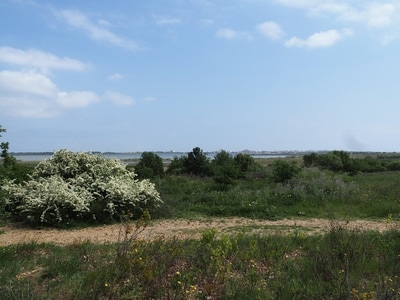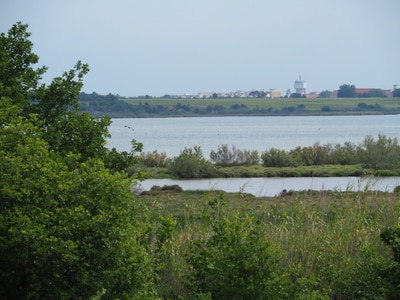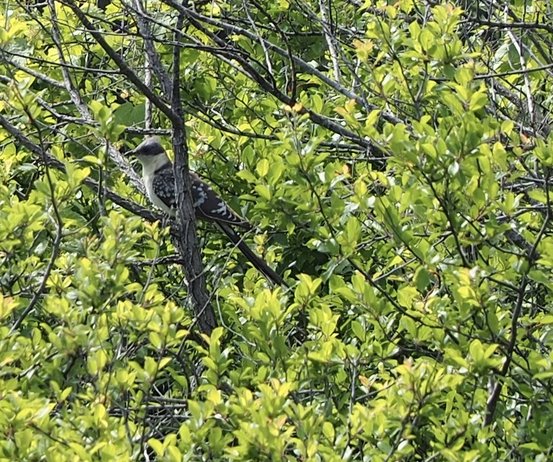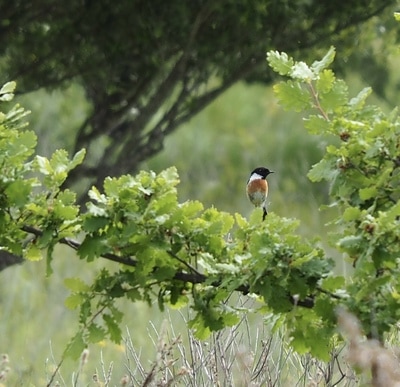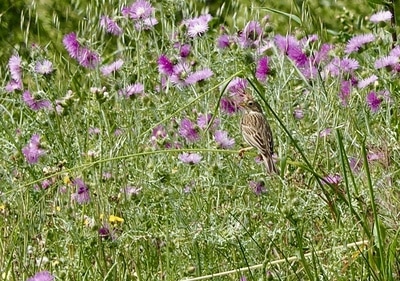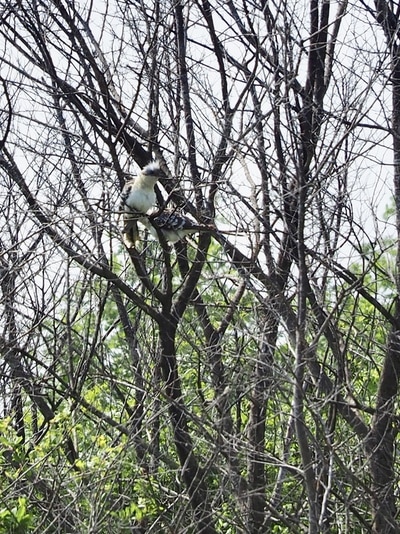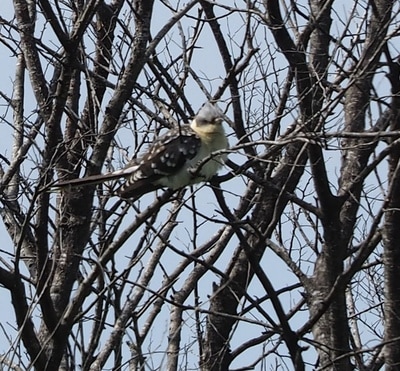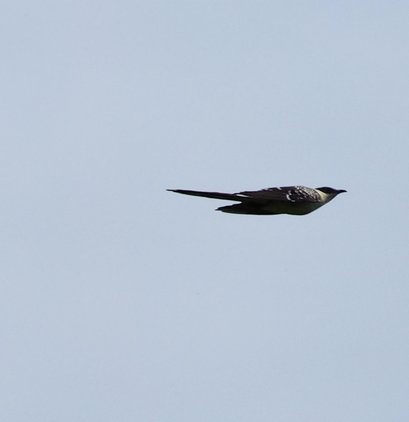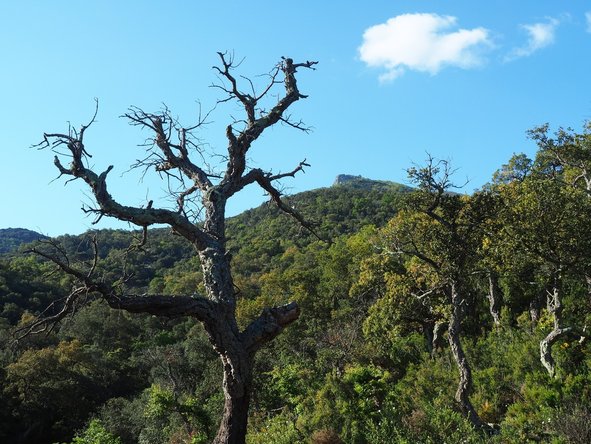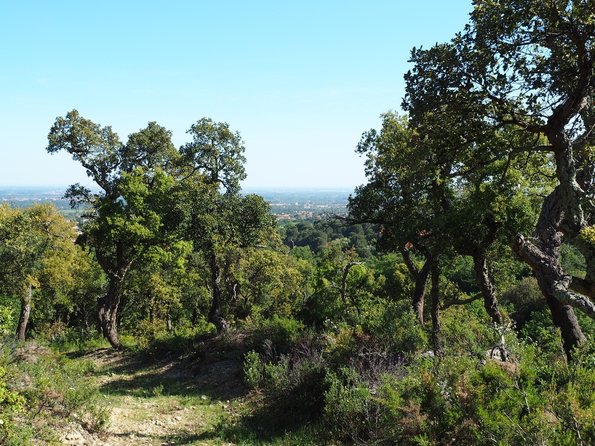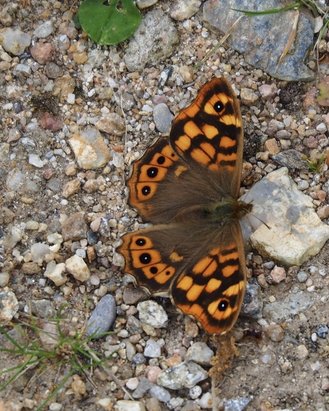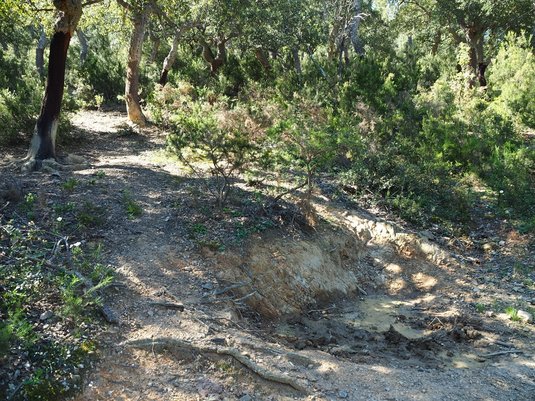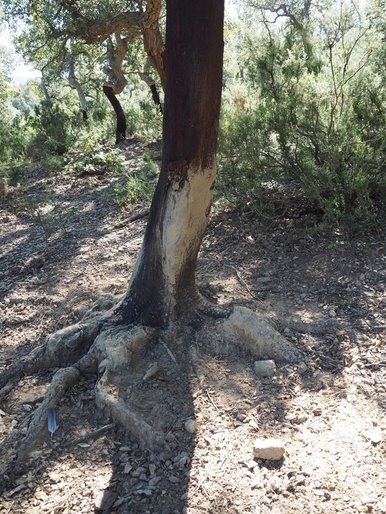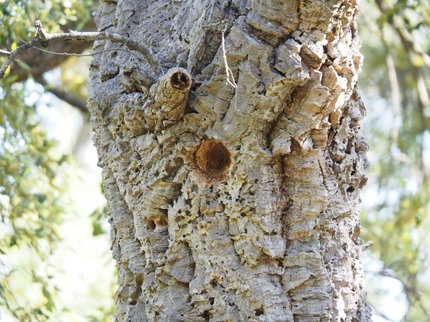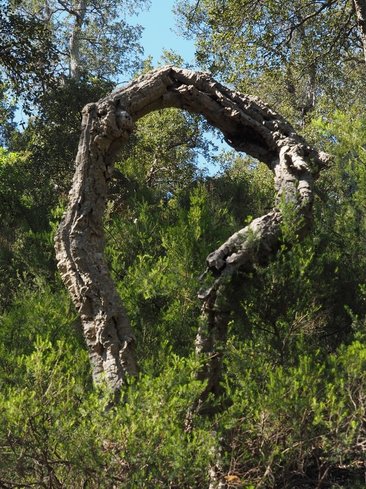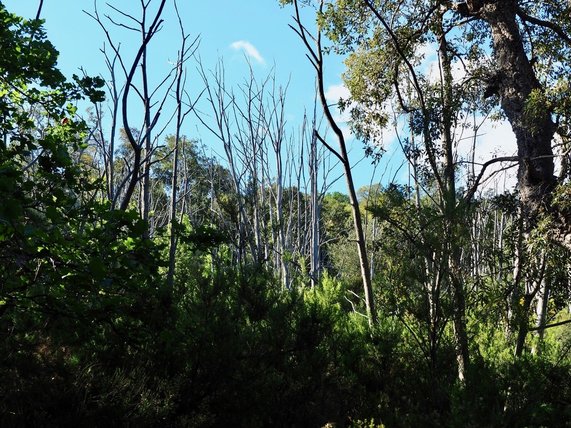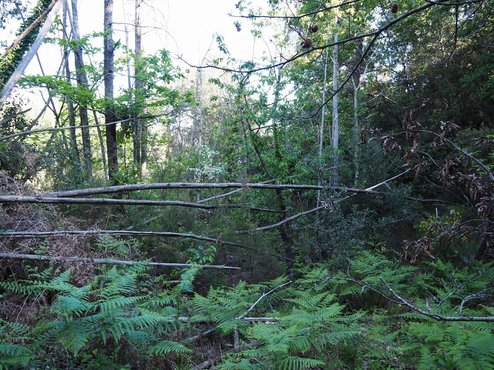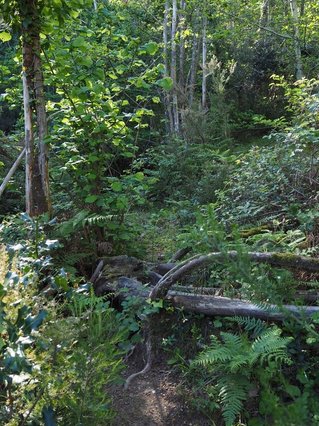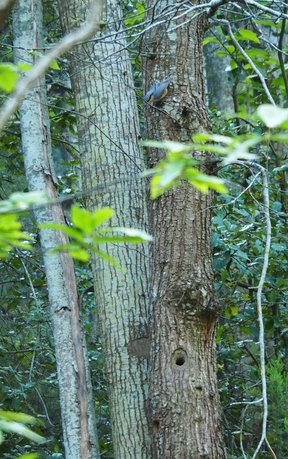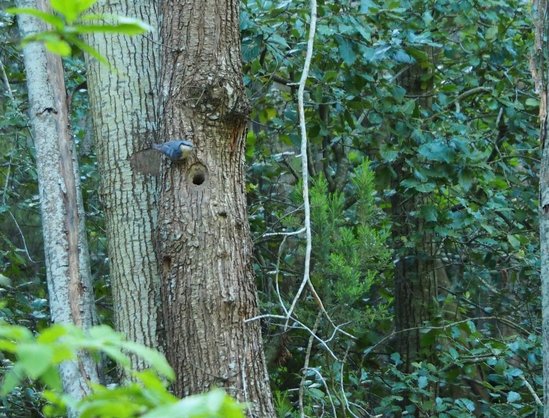I expected to see one pair at best. What a surprise, therefore, to discover possibly two pairs, noisily chasing one another back and forth. Whenever I had one couple in the binoculars in front, it seemed I could always hear at least one more bird making a racket* somewhere behind. I certainly spotted three in the same tree at one point.
For the hour-and-a-half I was there, the cuckoos put on a fine display. Capturing them on film was of course far more challenging than watching through binoculars or with the naked eye. Even though I sat still in one spot for some time, they refused to oblige and come close - preferring to perch and do fly pasts "over there", usually against the light.
To me, they look comical at times, puffed out and rather smug. Their cream, grey, black and white markings make for perfect camouflage. It's easy to scan dead trees and suddenly find you've been staring right at one without seeing it.
